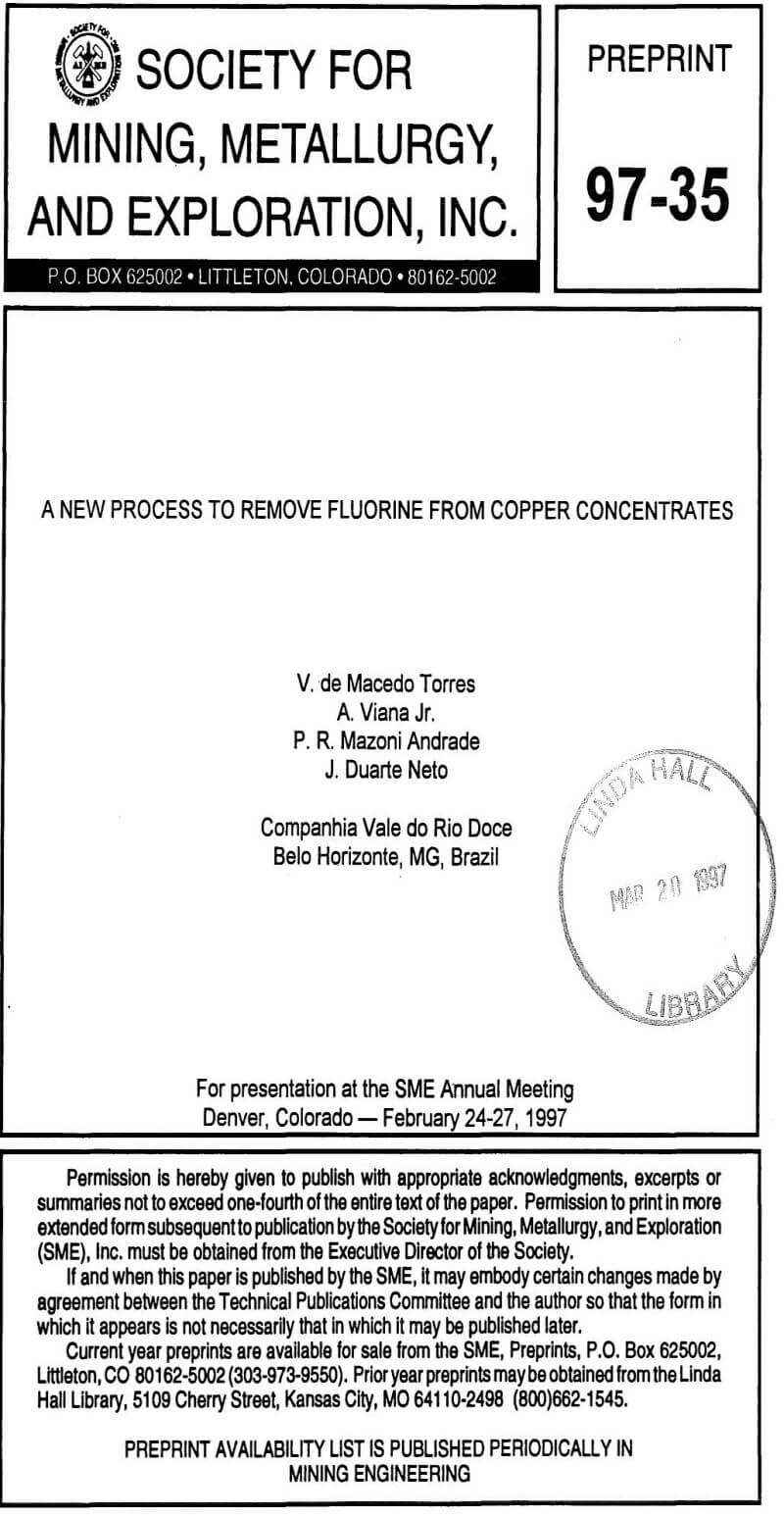Hydrometallurgical Removal of Fluorine from Copper Concentrates: CVRD Technology Center (SUTEC) has developed and patented an hydrometallurgical process route to remove fluorine from copper concentrates, as a result of an extensive testwork to investigate the effect of mineral acids on fluorite solubilization.
The process developed consists of leaching the high fluorine copper concentrates with H2SO4 or HCl under controlled conditions. The controlled leaching solubilizes all fluorite minerals accessible to solution. In addition, the transparent minerals have their structure altered by the acid, turning into amorphous compounds. Table 1 and 2 show a chemical and mineralogical analysis of an ore submitted to the fluorine removal process, before and after the leaching.
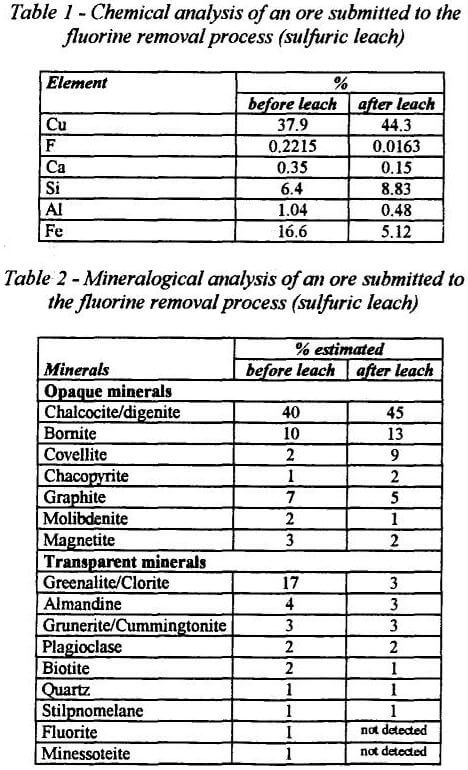
As it can be seen in Table 1, there is an upgrade on the copper content of the concentrate, which also increases its value for sale to smelters.
If the ore contains bornite and chalcocite, some copper is also leached. Therefore, the pregnant solution must be processed by solvent extraction and electrowinning (SX-EW) to recover the copper contained. As a result, it will be produced an upgraded copper concentrate and cathode copper.
If the ore contains only chalcopyrite, the degree of copper solubilization should be minimal.
Table 3 shows results from different leach conditions applied to the same ore characterized in Table 1. A suitable condition must be selected in order to minimize copper solubilization on producing a copper concentrate with less than 500 ppm of fluorine.
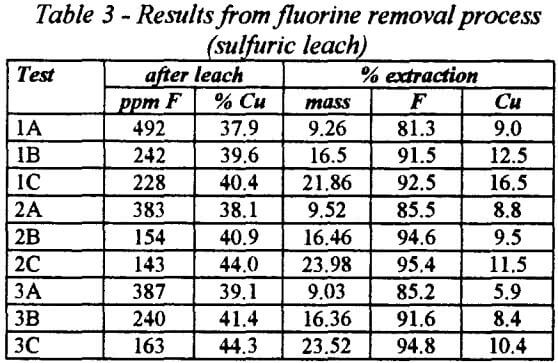
If no source of sulfuric acid is available, HCl can be used in the process instead of H2SO4. The HCl leach removed about 93 % of the fluorine contained in the ore, although the copper extraction was about 36%. The higher copper solubilization will result in a higher metallic copper/copper concentrate production ratio.
The complete process route to be applied will depend on the project being developed. If there is an oxidized ore to be processed by dump or heap leach, the effluent from the SX-EW can be applied to the dumps.
Three possible process routes are presented in Figures 3, 4 and 5
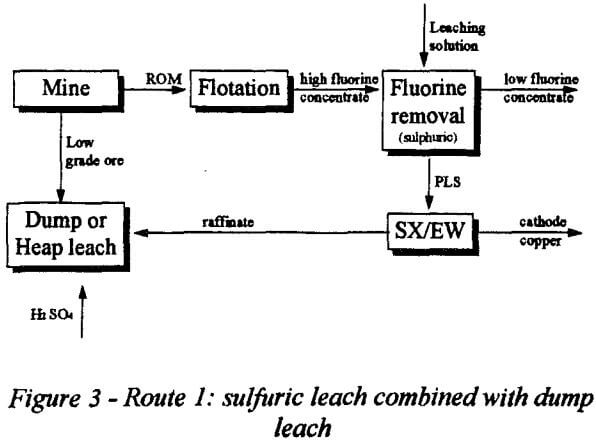
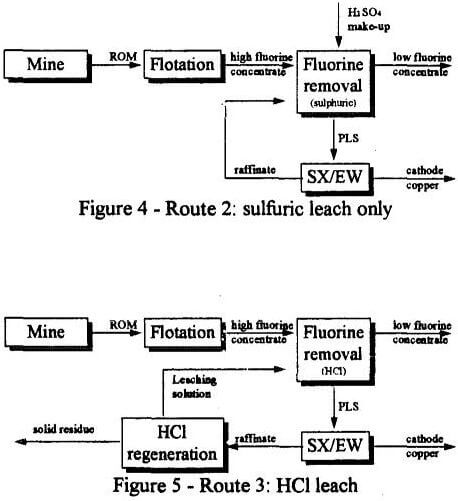
An economic analysis considering some alternatives was performed for an individual case study, including the following:
- selling the copper concentrate with high fluorine content;
- selling a clean copper concentrate after fluorine removal and producing part of the copper as cathode;
- producing refined copper using a proprietary smelter (verticalization);
- producing cathode copper using roasting followed by acid leach and SX-EW.
The following conclusions were obtained:
- verticalization is highly recommended, but requires a higher investment level;
- for a lower investment level, the fluorine removal process can increase the project value, due to:
- minimization of the commercialization risk of selling a high fluorine concentrate;
- production of some copper as cathode, increasing the product value.
